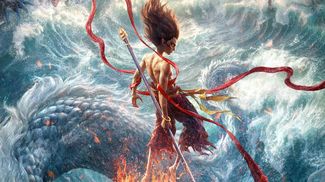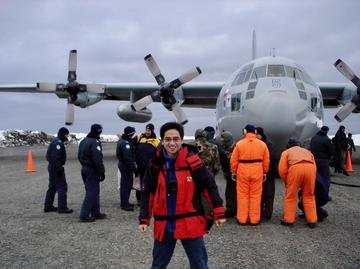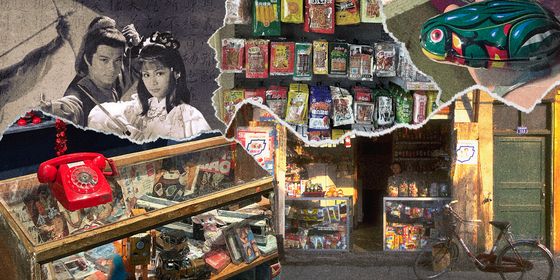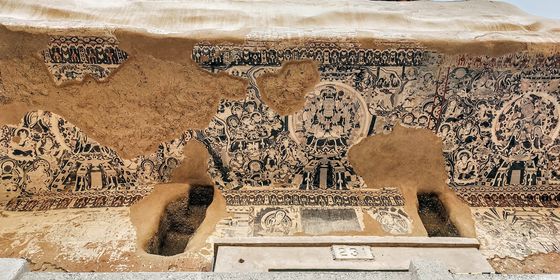Four-time Antarctic expeditioner Cao Jianxi recalls the dangers, thrills, and lifelong bonds he developed in one of the world’s most extreme environments
Antarctica is the only continent on Earth that is not permanently inhabited by humans—but that hasn’t stopped humankind from being fascinated it since ancient Greece. It wasn’t until 1911 that a Norwegian scientific expedition first reach the South Pole, marking the beginning of real human exploration of the icy continent.
Thanks to the efforts of scientists from various countries, we now enjoy unprecedented knowledge of this continent. But the average person's impression of Antarctica stops at glaciers and penguins, while the lives of researchers who temporarily inhabit the South Pole remains shrouded in mystery.
Cao Jianxi, our narrator today, has been on four scientific research expeditions on Antarctica. He is among the world’s chief experts on life on the continent, yet shockingly, he never harbored lifelong dreams of exploring Antarctica while growing up, nor imagined that his fate would be irrevocably tied to this land.
1
Growing Up in a Mountain Village
My name’s Cao Jianxi. I am 42 years old. I've joined four research missions to Antarctica in my former capacity as a member of the Chinese scientific expedition team.
I was born and raised in a particularly remote rural area of China. I had to cross two mountains by foot to reach the closest town from my village, another tiny lost spot in the map. To reach the county seat, I had to hop on a bus.
Back then, I rarely had a chance to get out of the village. What I did have was plenty of idle time to fantasize about the outside world. Kids in my village grew up longing to reach those distant destinations, where we hoped to see and experience as much as possible. And we admired those who managed to do just that.
Story FM: Early on, Cao proved to be an outstanding student, particularly in the sciences. He earned a spot in the county’s middle school, and later admission to Tongji University in Shanghai. That was when he left the remote mountain village of his childhood.
Cao’s life as a university student was uneventful. However, he often felt lost in the metropolis. Even upon graduation, he still couldn’t figure out what was next for him, until he chanced upon an unexpected path.
2
Bound for the South Pole
Companies back then recruited graduates by posting physical ads at schools and career fairs. Someone put up a printed A4 sheet downstairs in our student dorm.
The piece of paper introduced me to the Polar Research Institute of China (PRIC), a research center for observation, investigation, and evaluation of polar environment, which operates the Chinese Antarctic/Arctic Research Expeditions (CHINARE) every year. PRIC is in charge of the research facilities and properties, including the Snow Dragon, the CHINARE’s icebreaking research vessel.
I studied mechanical engineering, and the ad recruited graduates to manage the equipment at the research station. I signed up for the first round of interviews along with my classmates, but perhaps the somewhat low wages dissuaded them.
On the other hand, I was mostly looking to secure a job that would pay me enough to live independently. I really ended up cherishing this experience. That’s why even though my peers ended up making thousands of yuan more each month than me, I’ve never regretted taking what I then knew to be a once-in-a-lifetime chance to go to Antarctica.
Story FM: Once selected by PRIC, Cao spent the next year training for his first expedition to the Antarctica in late 2005, along with 11 other team members. They were headed to the Great Wall Station, the first Chinese research station in Antarctica, lying on the southwestern Fildes Peninsula on King George Island.
Antarctica is about 1.5 times the size of China. If the continent was shaped like a unicorn’s head, then King George Island would lie at the tip of its horn. It is outside the Antarctic circle, fairly close to South America, and therefore blessed with a relatively mild climate that has lured many countries to build their scientific research stations there.
Cao and the members of his expedition departed from Shanghai. After over 30 hours of travel, they landed in Chile. This was the start to his first-ever trip to Antarctica.
3
Arriving in Antarctica
Boarding the flight was a really special, exciting moment that I can still recall. This was a roaring military aircraft with canvas seats. The windows were placed so high that we couldn’t see outside, let alone try and figure out our location while in the air. It felt like time-traveling.
Then, the touchdown: The airplane doors opened and we found ourselves looking at this vast, almost entirely pure white landscape with nary a tree in sight. But there was no time to adjust. We all got off the plane and retrieved our luggage. Senior team members greeted us and took our picture at the spot. Better take it now, they said.
These seasoned men were nothing like us first-timers. They looked unkempt, unshaven, and somewhat abnormal. Their gazes were most remarkable—blank, even despondent.
We had to hop on a snowmobile to reach the Great Wall Station. On our way there, a pair of wild penguins rushed past the side of the vehicle, making us squeal with excitement. It was only then it dawned on us that we were really in Antarctica.
The Great Wall Station awaited us behind a small slope. It was an area composed of a dozen buildings in different sizes. We would lodge in the second floor of the two-story “Living Pavilion,” which had combined kitchen and dining facilities on the first floor. This was the building that catered to our everyday needs.
I walked into my room, which was equipped with a cabinet on the right and a table next to the window. I spent my first night leaning against the window with my gaze fixed outside for a long while. At midnight, it was still bright out that I could clearly see the mountains in the distance.
The facility was kept warm with electric heaters in the rooms, corridors and dining areas, and we would only need to wear a thermal shirt indoors. Before venturing outside, we’d layer up with a thick windproof thermal jacket and pants. An additional one-piece suit was a must for going out into the wilderness, as were rain boots which allowed us to step on, rather than sink in, the snow.
Story FM: Planting crops is strictly prohibited in Antarctica because of their potential threat to the continent’s native ecosystem. It’s not like the harsh climate would allow you to harvest anything, either. For necessities, members of expeditions relied on whatever supplies they could get from the extremely infrequent transports.
I was there as a team administrator, kind of like a butler, managing all our warehouses and kitchen and ensuring that we had supplies readily available every day—alcohol and beverages, rice, flour, and such. Dried foodstuffs from the Northeast of China were easiest to preserve and therefore frequent on our menu. But anything green and leafy was largely absent. We relied on dried bean curd and seaweed, which we soaked in water before cooking.
Our full-time chef, Mr. Zhu, was still there from the previous expedition team. He’d ring a bell for mealtimes, or one of his kitchen assistants or myself would take over the task.
Our meals —usually three dishes and a soup— all came served in large iron pots: chicken, stir-fried pork belly with black fungus, and so on. We had a pre-packaged seaweed egg drop soup that was ready to eat after adding boiling water. We did have some dehydrated vegetables too, but they were pretty bland even after a culinary makeover.
Sometimes we treated ourselves to a little barbecue in the wild, bringing our pots and iron skewers. It was fun, particularly whenever the tide was low. That was when we’d catch all the abalones that had been left lolling on the stones, grilling them on the iron plates in skewers. Now that was a highlight: the best abalone I’ve had in my life, with the most tender flesh.
We went all out for holidays and birthdays. We’d gather around a table dressed up with a white tablecloth and loaded with about a dozen small dishes on white porcelain crockery. Some flowers completed the scene—pretty in plastic. We even had our own festive slogan banners: a red cloth to which I’d pin A4 sheets, each printed with a different separate character to form a message for the occasion: ”The 22nd CHINARE Team Celebrates the Mid-Autumn Festival from the Great Wall Station!” On birthdays, Chef Zhu baked cakes, and the head of station would send a commemorative greeting card that all 12 team members signed. That was worth keeping as a souvenir.
4
Antarctic Summer Life
Story FM: In addition to warehouse duties, Cao was also in charge of the souvenir shop and post office at the Great Wall Station. The post office handled the team’s communication needs with the outside world, and often received fan mail from enthusiasts of all things Antarctic.
I don’t know how they managed it, but strangers would figure out our address and send us lots of letters. During my time managing the post office, dozens of fan letters arrived every month, mostly from folks either sending greetings to our expedition or requesting postmarks for their collection. They’d send envelopes and stamps, and I’d stamp them with our postmark, reading “Great Wall Scientific Research Station.” The postmark was unique, so it felt precious back then.
Sometimes, the letters came with a little money: 1, 5, or 10 US dollars at most. I collected them all and took to Chile, where I stamped and mailed them back to the sender via the Chilean scientific research station.
Story FM: The Great Wall Station is a must-see for many tourists, too, including celebrities. For instance, the famous Hong-Kong actor, Tony Leung, paid them a visit once. VIP visitors added to the team’s workload sometimes.
We were in regular touch via two-way radio with this guy working in tourism who was often in Chile. I don’t quite remember his name: Ou Laihong, or something. Once, he let us know that some distinguished guests were headed our way, and asked us to send a car to pick them up. But that treatment was only for official visits. We refused, but he insisted until we basically ignored him. We were there to conduct scientific research, not to run a travel service.
A few hours later that day, we saw a group of about eight people, dressed in simple and inconspicuous dark clothes, walking on their own toward the station. Our mysterious VIP was none other than Chinese businessman Wang Shi of the Vanke Group. This was at the peak of his influence, which made some of us at the team feel that we should have picked them up. Perhaps Wang Shi was used to hospitable reception wherever he went. I can only imagine his surprise when we effectively paid him no attention in such a remote corner of the world. He seemed calm and composed, but we did feel that we might have treated him too lightly.
This was before the smartphone era, not to mention we wouldn’t have had any reception either. But somehow we did get our hands on some Chilean payphones that gave us our cheapest option to call home for about 1 US dollar a minute. We exchanged coins at stores or post offices in Chile, inserted them in the slot, and called. It was still much too steep a phone bill, so we mostly called to say hi rather than have a proper conversation.
My thrifty mother was not up for wasting money herself. When I called home at the three-month mark of my stay in the station, she said, “We’re all fine, don’t worry,” and promptly hung up on me. It was around the Lunar New Year, but my folks would be empty-nesters that year—my siblings couldn’t make it home either that year.
We were all itching to call home that day, but some waited until late because they were busy at work. By the time they made it to the phone, it was bursting with coins and could no longer be used.
The short but pleasant Arctic summer was about to wind down. Soon enough, we’d be in for a long winter.
Story FM: Most Arctic scientific missions can only take place in the summer, so team members often return to China once the season is over. Cao was part of the skeleton crew left behind for “wintering.” He was in charge of ensuring the smooth operation of the research station during this time period.
5
A Hard Winter
The workload during the winter was significantly lighter. I was in charge of the kitchen, so I’d just hit the warehouse every day to fetch whatever vegetables, meat, and ingredients we needed for the next day.
We also got to sleep in. The sun would not rise until 10 in the morning, and when we got up it was lunchtime already. After that, we’d loaf around waiting for dinnertime. I would often wrap the quilt around myself and chill in my bed, playing games or watching movies. I grew very fond of this heroine from a movie or TV series. She had an oval face framed by a red hood that seemed to merge with the red tones in the background. I found her really beautiful. In my loneliness and longing for a partner, I would often gaze at her picture on my mobile phone.
I wasn’t alone at the station, but the team members seldom talked to one another. In this closed environment, we grew more sullen by the day, retreating to our rooms to kill time in silence rather than socializing. Senior team members seemed less affected; us youngsters were more susceptible to fits of bad temper and the subsequent spell of self-isolation.
Sometimes, an older staff member would walk into the gloomy canteen and try to lighten up the spirits by joking or greeting everyone around. Weirdly enough, nobody would answer.
This atmosphere led to frequent conflicts and quarrels. Toward the end of the winter season, my interactions with my direct supervisor had soured compared to the beginning, when we’d gotten along well and saw each other as equals. Now, he gave me the most orders. Sometimes it was just to ask for a cigarette or a drink, and I would feel immediately wronged. Every trivial thing he did rubbed me the wrong way. Like that, the discontent piled up.
Our relationship wouldn’t mend until the end of the winter season. Back in the ordinary world, you’ve got plenty of ways to deal with work issues. You can clock out and go home, or vent with friends over a drink and a bite. None of that was an option here. The next day, you’d still wake up at the station where you lived, worked, and butted heads with your colleagues. No wonder we felt a little more dejected with each passing day.
Story FM: In his first winter, Cao kept a calendar in his room where he counted down the days left until he could go home. However, he had mixed feelings as his date of return approached. He looked forward to the reunion with his loved ones, but he also feared not being able to integrate back into society.
6
End of Winter
Waiting for our return flight at the airport, I felt myself burst with excitement. It’s hard to describe. Boarding the plane felt, again, like space-time travel. I wondered whether I could truly return to my original planet.
The plane landed in Chile and I couldn’t tear my gaze away from the trees and buildings surrounding the runway. I was impatient to walk out of our hotel and examine everything around me: the people, the vehicles, the trees again—oh, the trees. I hadn’t seen any in a year.
Story FM: Cao eventually returned to China for a little over a month before reporting back with PRIC. Life in the Antarctic had undoubtedly changed him. However, the life he got to return to during his holiday was also fairly different from his expectations.
In Antarctica, I’d felt I wouldn’t be able to return there once I left, but once I was home in China, it dawned on me that I could no longer adapt to my former life, either.
It’s like setting an inmate free after a decade behind bars. They’re going to struggle, and miss the prison environment. I really tried to readjust, but after a few months, I still felt a discomfort that eventually led me back to Antarctica.
Story FM: In 2007, Cao joined China’s 24th Antarctic scientific expedition aboard the Snow Dragon. This time they were headed inland, to the Zhongshan Station. Back at the Great Wall Station, Cao’s struggles had been mainly psychological. Things were about to change in this new location inside the Antarctic circle. Now, it was also a physical challenge.
Zhongshan is the second scientific research station set up by China in eastern Antarctica, 4,986 kilometers away from Cao’s former stomping grounds. That’s farther than the distance between Shanghai and Urumqi, and worlds apart in terms of climate and environment, too. In this harsh realm, Cao would encounter plenty of unprecedented dangers.
7
Life and Death on Ice
Even after you arrive in Antarctica, you only truly understand danger when you look at it on the face. This is doubly true in the inland regions of the continent. Many of the researchers were first-timers to these vast snowfields and boundless glaciers. Accidents were bound to happen.
The Snow Dragon transported us and our supplies, but we had to stop some 10 or 20 nautical miles away from our destination, Zhongshan Station, because the ship was only fit to break ice up to 1.1 meter thick. We had to unload our supplies from the vessel and transport them to Zhongshan Station on snowmobiles and sleds.
On the sea around the station, large chunks of ice had melted and refrozen into different patterns over time, leading to an unstable structure with dangerously uneven levels of thickness.
For safety reasons, snowmobiles typically require two drivers—a pilot and a copilot. This ensures that there will always be someone to grab the two-way radio and report an emergency.
One of my fellow team members was an experienced chief mechanic named Xu Xiaxing. He was able to drive the snowmobile by himself, and on this trip, he decided against having one of us accompany him. It wasn’t a pressing matter, and he didn’t want to bother the rest of the team.
What’s more, he didn’t even take a sled with him. Inside the ship, we installed the runners on the snowmobile and put it on the frozen surface of the sea with a crane. Xu started the vehicle and drove forward.
Wang Hailang, our team leader’s assistant on duty in the cabin of the Snow Dragon, later reported that he saw the snowmobile come to a halt and then spin in place before it started to sink in the ice.
Xu kept his cool at first. Drawing from previous experience, he stepped on the gas, confident that he’d manage escape.
He was wrong. The ice was so thin that it could only break faster under the rapidly sinking vehicle. Now, bubbles started coming out of the parts of the snowmobile underwater, and Xu no longer underestimated his predicament. Now he was panicking as his mind rushed to think of his loved ones. He was sure he was done for.
Xu tried to escape through both the windows and the sunroof, but water pressure kept both firmly shut. Same with the door. The one glass window on the driver’s door could be pushed left and right. Xu opened it by accident and water gushed into the vehicle.
Eventually, he did manage to push the sunroof open and exit the vehicle. This porthole was similar in size to those in an average car, but here Xu could only barely pry open a slit about five to ten degrees wide. He had climbed onto the vehicle’s middle platform and broken the connecting rod, forcefully pushing the porthole open.
Xu was finally free, only to find his boots stuck to the sinking vehicle. These bulky boots were designed to shield his feet from temperatures as low as minus-30 degrees. Getting rid of them cost Xu a lot of strength, and he swallowed a lot of sea water.
Xu swam upward, though he only knew he reached the surface when his head thumped on the ice sheet. His hand gripped the edge of a crevasse.
He made it out before the rescue team arrived, but barely took two steps before collapsing.
The incident meant the immediate suspension of our work. We all felt at a loss, especially for our team headed inland. We’d lost one of our best vehicles, and the other two new snowmobiles clearly couldn’t make it across that ice sheet. We could no longer ensure that we’d complete our mission to finish the construction of Kunlun Station, more than 1,000 kilometers further inland from the Zhongshan Station.
Story FM: Kunlun Station is the southernmost of the four Chinese research stations in Antarctica. It is located at the highest point of the Antarctic ice sheet, which also happens to be the most inland part of the continent. On one hand, the 4,087 meters of altitude provided the best atmospheric transparency on planet Earth, making it the ideal location for astronomical observation. On the other hand, the natural environment here was so mercilessly harsh that no country had ever dared to build a research station there.
Our team leader made sure to get us all in the right mood with a drink of baijiu. However, as soon as we emptied drunk, one of the senior team members threw his bowl on the ground and shouted, ”Off to the cars!“
We grew sullen. Tears flowed down unconsciously, and I felt this chill in my heart as we set out with our vehicles, one after another.
Departing from Zhongshan Station, we inched toward the inland ice cap. Once we left the coast, only ice and snow remained on the ground.
We carried everything with us, including food and supplies. We lived on sleds fitted with shipping container-like units with special insulation. Every day, we set up camp wherever we decided to stop. Mealtimes invariably featured the same pre-packaged fare that you’d get in a plane, ready for us to heat and consume.
Water was the hardest to secure. We used electrochemical barrels which processed snow into a reduced amount of drinking water. The process took hours and we had to keep refilling the containers with snow.
Of all assets, time was of the essence. We were trying to reach Dome Argus, the tallest ice dome on the East Antarctic ice sheet, as soon as possible. In the extremely harsh weather here, the temperatures plummet past a certain point of the day. November and December see no shortage of sunny days, but come February and March, snowstorms are all you get.
For this reason, we drove as much as possible, running on precious little sleep. At least driving was simple enough, as we could lock the gas pedal and went at a slow speed.
We were bored to tears, though. We had to keep our trained in front of us, void of any scenery. It wasn’t like driving your average sedan, where you can at least glance at the views on the sides of the road. But here, soon enough, you run out of small talk with your copilot.
Left to my own devices, I noticed myself repeatedly pondering over certain topics repeatedly which began to pierce my heart like a needle. These experiences altered my perspective on life. It is so fragile, to the point that any new day cannot be taken for granted. I feel this urge to enrich my life and make it more meaningful.
That was kind of my rationale behind going abroad. I’d lived in China for so long that I realized I was unfamiliar with the rest of the world that I longed to see by myself. I honestly couldn’t care less about stuff like money or owning property. Life is ultimately about what you get to experience along the way.
Story FM: Cao left the PRIC after his fourth expedition. Not long after, he chose to start a new chapter of his life in Australia.
8
Return to Antarctica
I got married, I focused on my new family life —an entirely different lifestyle. I never imagined that I’d return to the South Pole.
I didn’t spend my days yearning to go back, either. In fact, I initially shelved all my memories from that time, not even looking at old photos or videos. But time went on and those memories eventually flooded me. I thought about my life there, about my colleagues with whom I’d survived every curveball in this extreme environment where we could rely on no one but ourselves.
Sharing all the glory and suffering, we were like soldiers who fought together on the battlefield.
One shouldn’t ever give up on this kind of bond. They are few and far between in life.
Later, a friend offered me a chance to work on an Antarctic cruise ship. I was in high demand thanks to my experience in the region and my Chinese and English skills, particularly considering the rapid increase in the number of Chinese tourists in recent years.
I didn’t think much of it at first, but later that night, the more I thought about it, the more excited I grew. Every second of my former days in Antarctica came to my mind, as did the memories of the friendships I’d forged along the way. I felt as though if only I’d go back there, I’d find my way back into that same community. I felt this sense of urgency, much like the anticipation leading to my first expedition there.
The company put me on several Arctic voyages to Iceland and Greenland first for over half a year before finally sending me to Antarctica.
When our ship made it there and I spotted those snow-capped mountains and glaciers from a distance, tears welled up in my eyes.
Once ashore, even the stones were familiar to me. I met with a friend who’d been with me in that distant winter season, and he was so happy to see me that he cooked us some noodles. My joy and excitement caught me unprepared.
Perhaps it was magic, or maybe it was simply my fate. But I’d returned to my roots in this distant place, as if heaven held ajar this door for me until I decided to walk through and keep on going.
Story FM: After Cao wrapped up his career as a member of the Antarctic expedition, he wrote a memoir, Under the Ice Dome: My Antarctic Story, on his four trips to the continent. You can find more details in the book that were not included in this narrative.
Photographs provided by Cao Jianxi (曹建西)
Produced by Nan Xiang (南翔)
___
This story is published as part of TWOC’s collaboration with Story FM, a renowned storytelling podcast in China. It has been translated from Chinese by TWOC and edited for clarity. The original can be listened to on Story FM’s channel on Himalaya and Apple Podcasts (in Chinese only).
























